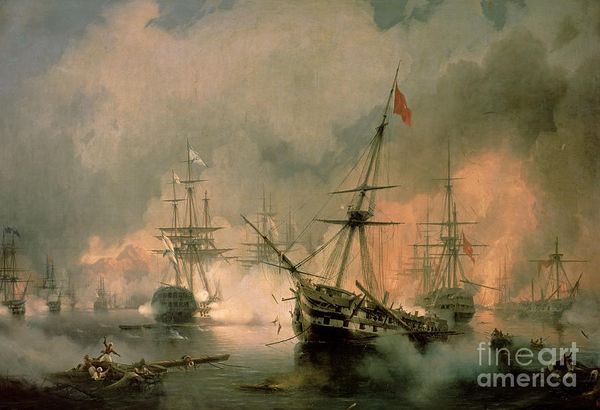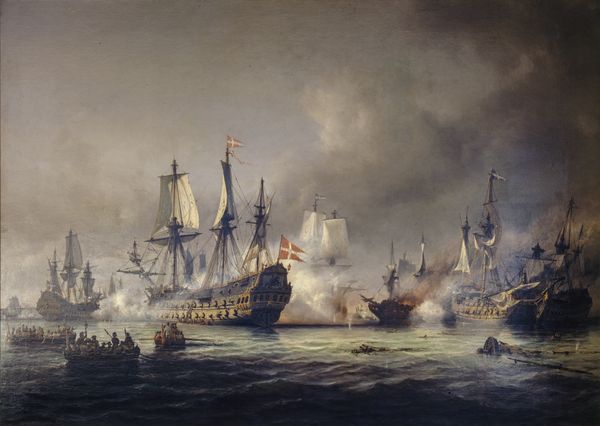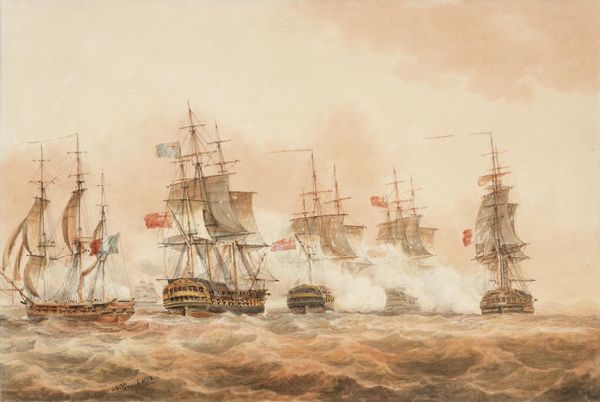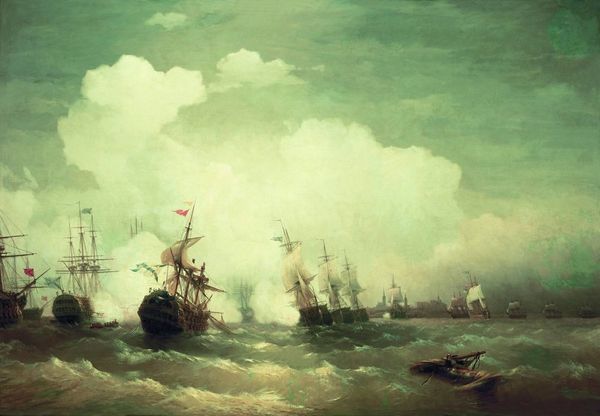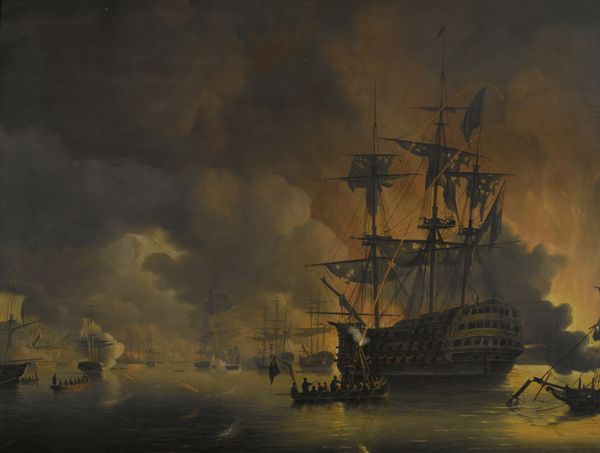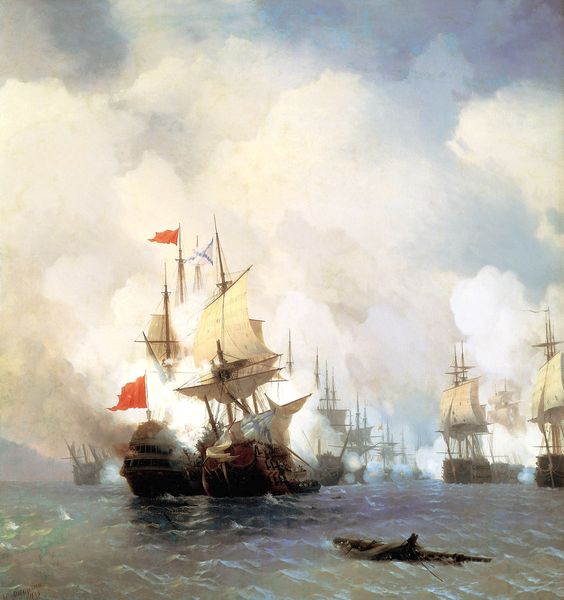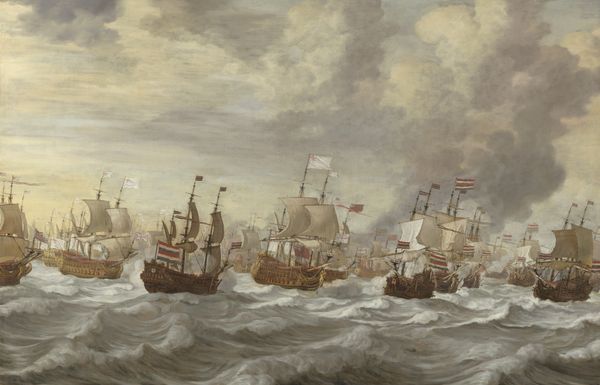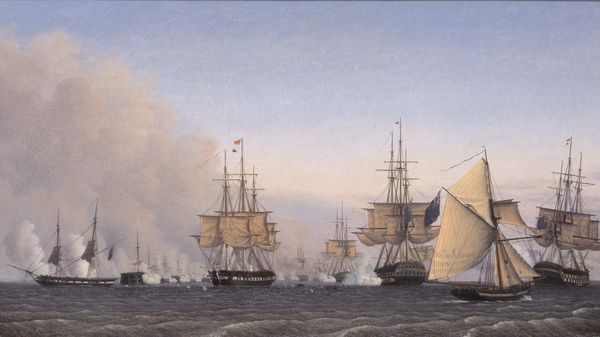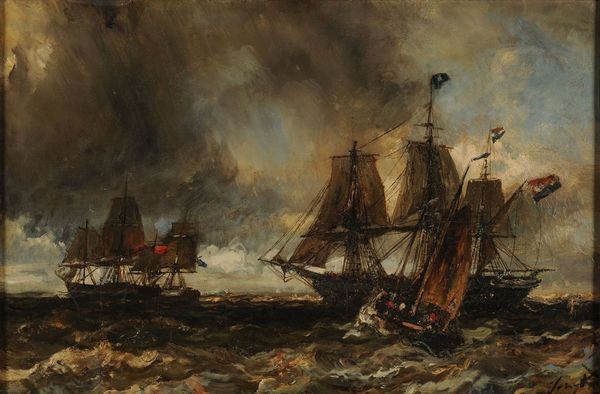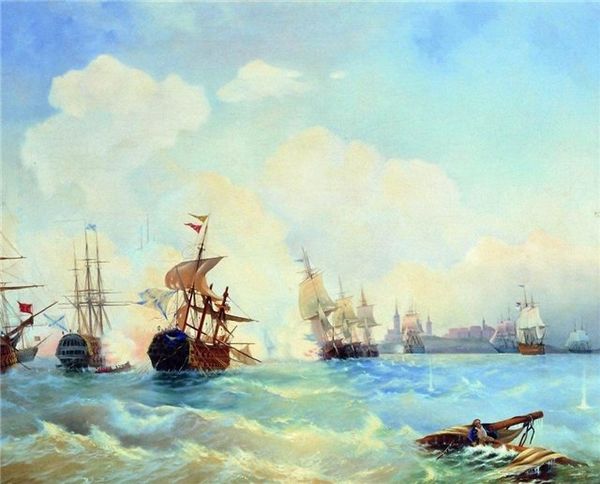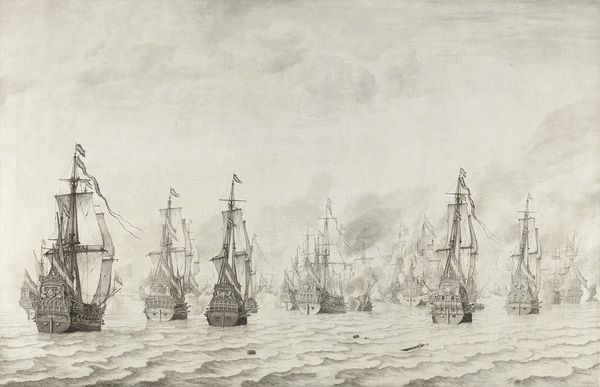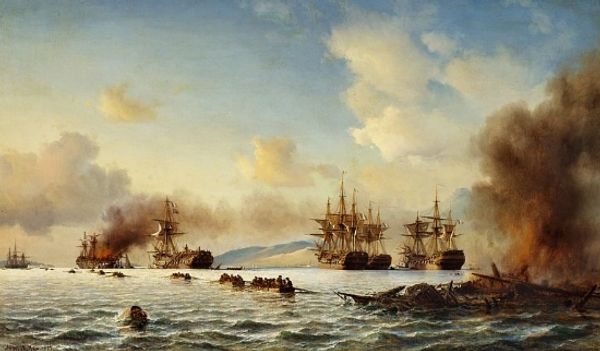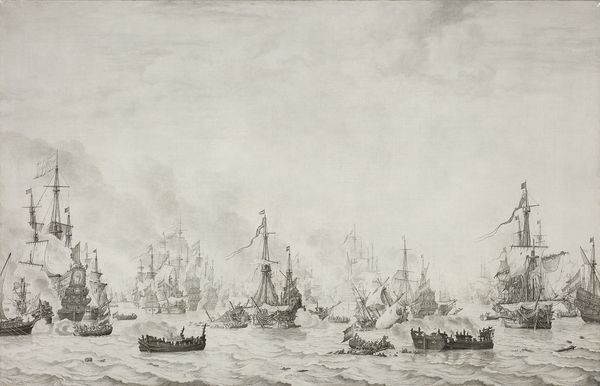
Russian-Turkish Sea Battle of Sinop on 18th November 1853 1853
0:00
0:00
ivankonstantinovichaivazovsky
Central Naval Museum, Saint Petersburg, Russia
Dimensions: 331 x 220 cm
Copyright: Public domain
Editor: So, this is "Russian-Turkish Sea Battle of Sinop on 18th November 1853" by Ivan Konstantinovich Aivazovsky, painted in 1853 using oil paint. The immediate impression is, wow, this is intense! It feels…chaotic, with all the smoke and ships battling it out on the sea. What do you see when you look at this piece? Curator: Well, let's look at it materially. Aivazovsky, here, is really foregrounding the production of warfare itself. The smoke, that visceral element, is so present because it is a by-product of manufacturing destruction through the means of ships, canons and human labor. Note also the sheer quantity of paint used to build the visual texture! This wasn't cheap to create. How does the materiality and method inform its cultural message? Editor: That’s interesting. I hadn't considered the cost of materials contributing to its meaning! It sounds like you're highlighting the consumption aspect, like the very real financial resources and labor power involved in a spectacle like war. Do you see a critique, or is this celebrating Russia's power? Curator: Perhaps a bit of both. It presents Russian power but also displays, even unwittingly, the colossal investment, material and human, necessary for such dominance. A key question for me is this: where do you see evidence of human cost in this piece? The lack of people seems strange, no? Almost as though labor has vanished from view? Editor: I guess the almost total absence of discernible figures minimizes any sense of individual loss. And actually makes a viewer think instead about the scale of the whole endeavor and perhaps what it took to achieve victory. I see how the use of paint itself and what it cost underscores those ideas. Curator: Exactly. It moves beyond just an image and forces you to recognize that you’re beholding a portrait of power achieved only by the extensive utilization of material, money and energy, a somewhat unsettling fact. Editor: This has really broadened my perspective. Thinking about the painting as a product, a material object, that speaks volumes. Thank you.
Comments
No comments
Be the first to comment and join the conversation on the ultimate creative platform.
